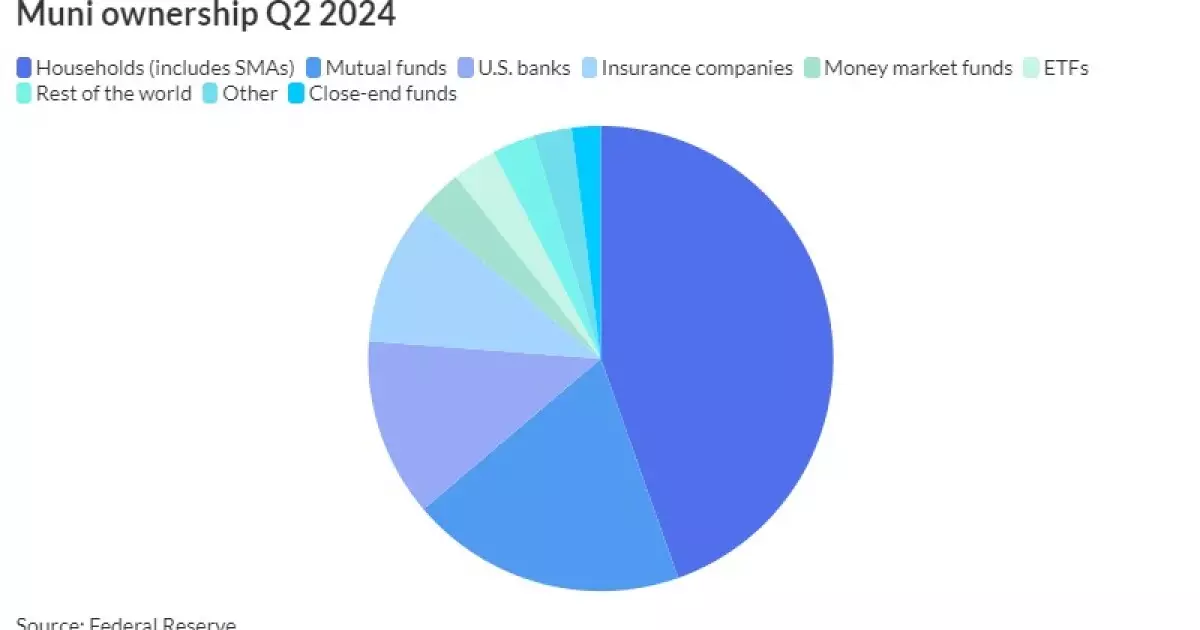In recent years, the investment landscape has undergone substantial transformation, particularly in the way assets are allocated through various financial instruments. One of the most significant trends has been the increasing preference for exchange-traded funds (ETFs) over traditional mutual funds. This shift is exemplified by BlackRock’s recent decision to convert its $1.7 billion BlackRock High Yield Municipal Bond Fund into an active ETF. This move illustrates not only a tactical repositioning by one of the world’s largest asset management firms but also reflects a broader trend prompted by changing investor preferences and the growing allure of more flexible investment solutions.
The success of ETFs can be largely attributed to their inherent advantages over mutual funds. ETFs often present lower fees, greater trading flexibility, and improved liquidity, making them more appealing to cost-conscious investors. According to industry veterans, such as Roberto Roffo of The Bond Buyer, the average fees for ETFs are approximately 50% lower than those for mutual funds, placing them in a favorable light in today’s investment climate. Investors are increasingly aware of these cost advantages, prompting a migration of capital from mutual funds to ETFs and separately managed accounts (SMAs). This trend allows ETFs to outpace mutual funds in growth metrics, such as total ownership, which reached $122.4 billion in the second quarter of 2024—a notable increase compared to the stagnant $775.1 billion held in mutual funds.
Moreover, the liquidity provided by ETFs, which enables continuous trading throughout market hours, is a significant draw for investors accustomed to the delays associated with mutual fund NAV calculations made only once per day. This dynamic has led to the establishment of a more favorable investor sentiment towards ETFs, as they offer an attractive alternative to older mutual fund structures.
BlackRock’s strategic conversion to an ETF format illustrates a calculated risk. By opting for this transition, the firm is relinquishing certain fee revenues characteristic of mutual fund structures, which indicates a bold move towards capitalizing on anticipated growth within the ETF segment. Industry analyst Pat Luby of CreditSights posits that BlackRock’s decision highlights the firm’s confidence in the ETF model, even if it comes at the cost of immediate revenue loss. As the municipal ETF universe is expanding—currently comprising 103 different ETFs—BlackRock’s entry indicates a recognition of this sector’s potential.
The firm’s conversion is expected to conclude in early February 2025, marking it as a significant milestone, not only for BlackRock but also as part of a larger movement toward mutual fund-to-ETF conversions. Since 2021, there have been 118 such conversions, signaling an escalating interest in adapting investment vehicles to better suit investor needs.
While there is a palpable momentum favoring ETF transitions, not every mutual fund is a suitable candidate for conversion. According to Dan Sotiroff, a senior manager research analyst at Morningstar, various constraints exist that can complicate the conversion process. Equity strategies, for instance, may be limited by capacity concerns that do not present themselves to the same extent in fixed-income sectors. In fixed income, as the demand for certain products can be more easily modulated, mutual funds are more likely to convert without encountering the same pressure. This flexibility in fixed-income strategies provides ample ground for firms to capitalize on the growing appetite for ETFs.
As firms weigh their options, the demand for ETFs continues to rise steadily. Companies like AllianceBernstein are already making the shift, with multiple conversions focused primarily on fixed-income products. This strategic maneuvering is indicative of the broader recognition within the industry that embracing the ETF structure may yield significant benefits far beyond mere cost savings. The prospect of investigating the future needs of investors is crucial, as asset management firms must take proactive steps today to remain relevant in the evolving market landscape.
The recent movements by BlackRock and various other financial institutions reflect a significant paradigm shift in asset management and investment strategy. The compelling advantages of ETFs—most notably their cost efficiency, flexibility, and liquidity—continue to attract a demographic of investors increasingly inclined to seek more effective and transparent options. Mutual funds are not being eradicated but are evolving alongside ETFs, creating a more diverse investment ecosystem designed to cater to a spectrum of investor preferences. Financial firms must remain vigilant and adaptable, positioning themselves now to capture future growth opportunities that lie within this dynamic and changing market; their failure to do so could result in missed chances as investor demands evolve.


Leave a Reply